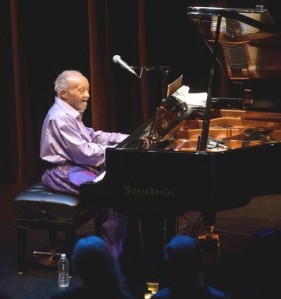I don’t read quickly, so it’s with some trepidation that I admit I spent the past year reading Peter Coyote‘s autobiography.
It’s not that it’s a long or difficult book. It’s a wonderful book. But music tends to take precedence in my free time. My daughter’s insistence on sharing the (thick, numerous) Percy Jackson books with me didn’t help. (They’re fun, btw.)
 So, on successive summer vacations, I read the first and second halves of Sleeping Where I Fall. Published in 1998, it’s a chronicle of the ’60s counterculture — not the war protesting and love beads you’ve seen on TV, but the earnest, dogged attempt to carve a societal alternative into the side of capitalism and commercialism. It’s at once realistic and sentimental, told with love and grace and some strong but necessary honesty.
So, on successive summer vacations, I read the first and second halves of Sleeping Where I Fall. Published in 1998, it’s a chronicle of the ’60s counterculture — not the war protesting and love beads you’ve seen on TV, but the earnest, dogged attempt to carve a societal alternative into the side of capitalism and commercialism. It’s at once realistic and sentimental, told with love and grace and some strong but necessary honesty.
I’ll give away the ending: Coyote doesn’t regret the ’60s and in fact does an excellent job defending the work — I do mean work — that he and the more responsible and idealistic of his compatriots undertook. He believes the counterculture brought concrete benefits to larger society, and I agree. That any smattering of environmental awareness has become the American norm can be traced back to the counterculture, I think. And the fingerprints on Occupy Wall Street are unmistakable.
(I am avoiding the term “hippie,” because it was crafted by Time magazine in a rather demeaning way — and because, yes, there were people who came to the Haight in 1967 and beyond just to party, get stoned, and mooch off of each other, and they are not what this book is about. While I’m at it: Yes, I know that “the ’60s” really refers to a period from about 1966 to 1976, and in fact, that’s the decade Coyote mostly focuses on.)
 Coyote’s epilogue is a touching essay in defense of the philosophy of the times. But where the counterculture’s contributions really shine, I think, is just before that, in the chapters where Coyote starts integrating back into society as a board member of the California Arts Council. The lessons he learned from more than a decade of communal life — about defusing conflict, having to share benefits and burden, having to manage a group dynamic — all come into play. Not everybody learned those lessons, but those who did became strong and good-hearted leaders in their communities.
Coyote’s epilogue is a touching essay in defense of the philosophy of the times. But where the counterculture’s contributions really shine, I think, is just before that, in the chapters where Coyote starts integrating back into society as a board member of the California Arts Council. The lessons he learned from more than a decade of communal life — about defusing conflict, having to share benefits and burden, having to manage a group dynamic — all come into play. Not everybody learned those lessons, but those who did became strong and good-hearted leaders in their communities.
Adding to the book’s emotional gravity are the current-day interviews with, and updates about, Coyote’s old friends. Not all of them made it out of the ’70s, but those who did are able to reflect on their lives with honest criticism and well-earned pride, and many of them seem very, very happy.
 Coyote’s trail starts in San Francisco as part of the San Francisco Mime Troupe and The Diggers, two influential groups. (Check out the Diggers Archives.) That’s followed by the rural, communal life of the Free Family. I wasn’t aware of just how deeply below the surface some of these people lived — existing without money, carving out a rural existence that required many sturdy frontier skills that would surprise and even impress the average redneck hippie-hater. Guns, motorcycles, hunting, and makeshift car and home repairs were all facts of day-to-day life.
Coyote’s trail starts in San Francisco as part of the San Francisco Mime Troupe and The Diggers, two influential groups. (Check out the Diggers Archives.) That’s followed by the rural, communal life of the Free Family. I wasn’t aware of just how deeply below the surface some of these people lived — existing without money, carving out a rural existence that required many sturdy frontier skills that would surprise and even impress the average redneck hippie-hater. Guns, motorcycles, hunting, and makeshift car and home repairs were all facts of day-to-day life.
The connection to my music blog is tenuous, but I’ve always felt shaped by the ’60s. I was a kindergartener in 1972, when the teenage girls across the street were hired to babysit us. They were east-coast hippie wannabes, and I remember them encouraging me to grow my hair long. Who knows. Maybe they planted in me a sympathetic seed that grew into a love for The Beatles, an open mind for the counterculture, and an open ear for the free jazz I listen to today.
I’ll have to dust off is It Was Twenty Years Ago Today, a book by Derek Taylor, who was publicist and much more for The Beatles late in their career. It’s another honest look back, but with less emotional gravity, more specificity, a lot more celebrity, and a quirky British wit. I’ll wait a while before getting to that, though. I want the ghosts of Coyote’s ’60s — the grand experiment he participated in, the people he loved — to resonate in my head for a while.









